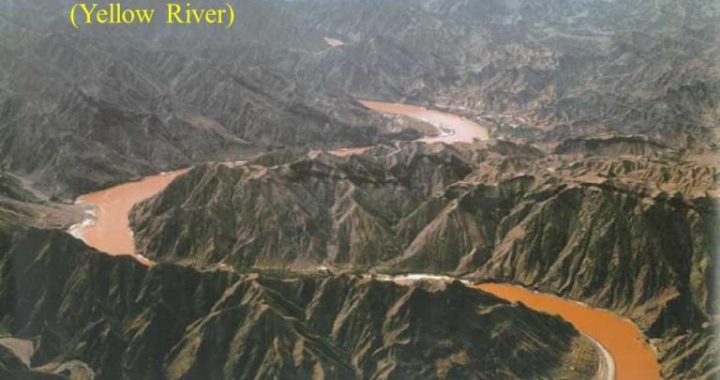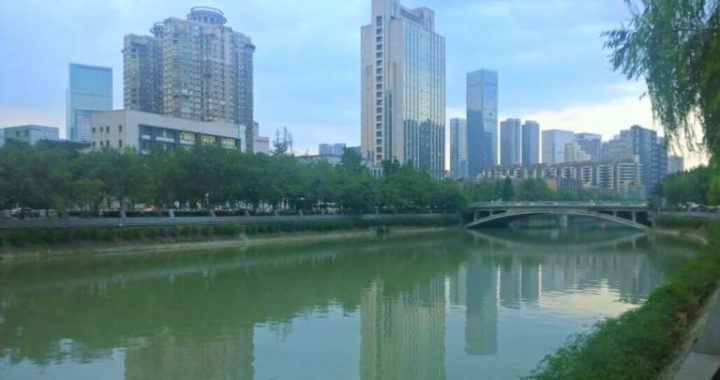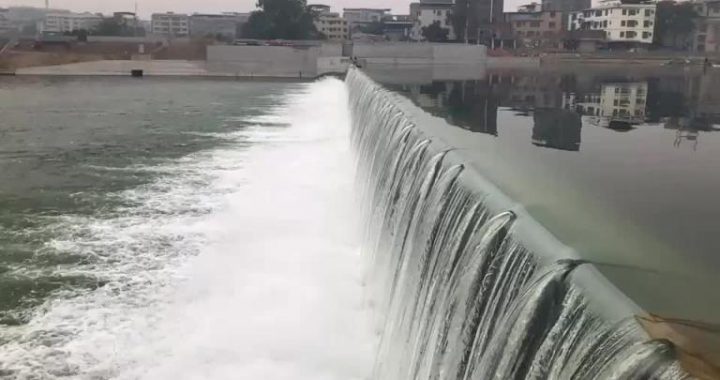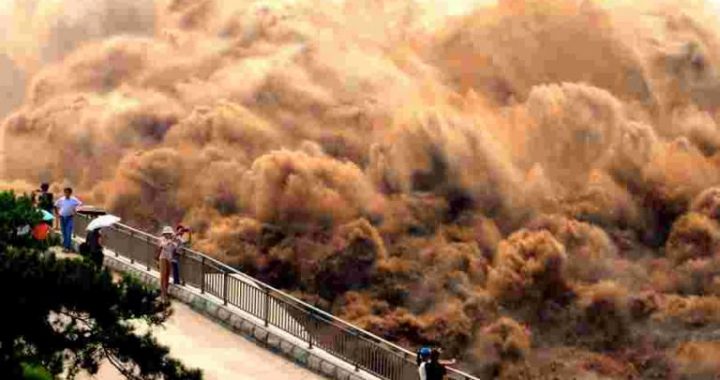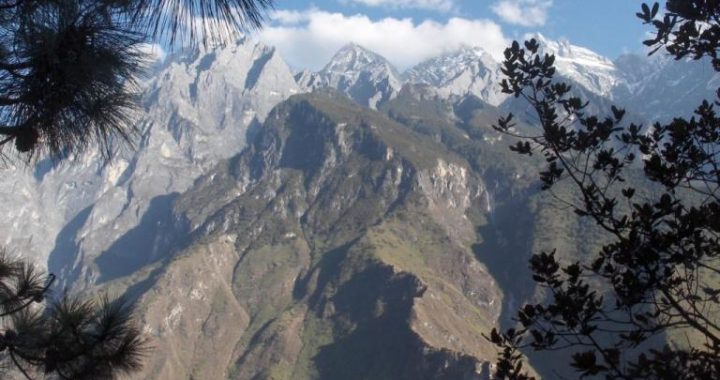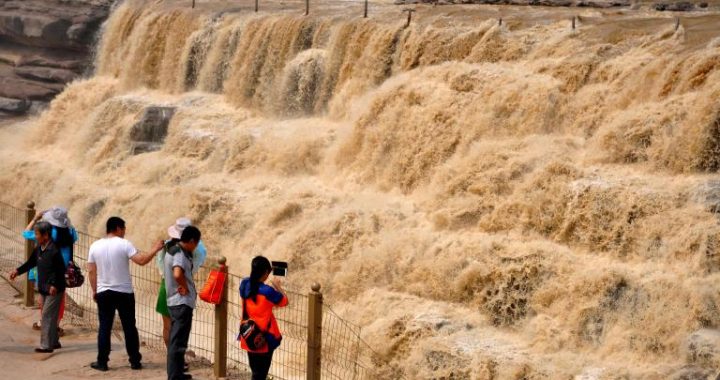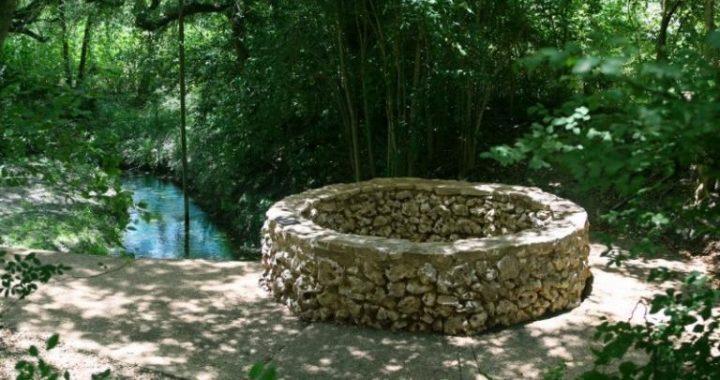“Three Rivers Confluence”Constitutes a Natural Barrier
6 min readAfter coursing through Longmen and emerging from the valley area between Shanxiand Shaanxi Provinces, the Yellow River suddenly widens up. The terrain along the river section from Wuwangdu in Linyi County to Tongguan, on the two sides of which distribute the downstream valley of Suhe River, Luohe River and Weihe River, is even broader. In addition, the Yellow River gets out of the bondage of the mountains and valleys here, therefore the river course of the Yellow River moved quite often in this area throughout the history, bringing grave calamities for the people alongside the river. The balladry in the Ming dynasty (1368-1644) sang that “the ghosts have no tombs, people have no houses and the farmlands were all destroyed”, describing the dismal situation caused by the course change of the Yellow River.
In about the late Qin dynasty (221 BC-206 BC) and the early Han dynasty (206 BC-220AD), the Yellow Riv er began to move westward. During Emperor Wu’s reign (140 BC-85 BC) of the Han dynasty, in this section the Satrap of Hedong (“Satrap of the east of the Yellow River”), Fan Xi, organized to reclaim over 5,000 qing of farmlands on the river beach of the east bank, which showed that at that time the river course has moved westward for a long distance, or there would not be so muchdeserted beach land for cultivation. Fan Xi also organized to dredge some channels to introduce water of the YellowRiver to irrigate these farmlands. However, the river continued to move westward and several years later these channels could no longer have access to Yellow River water, therefore these reclaimed farmlands were deserted again.

After the middle and later Western Han dynasty (206 BC-25 AD), the Yellow River moved eastward again. From the Western Han dynasty (206 BC-25 AD) to the Northern Wei dynasty (386-584), this section of river course was mainly stabilized at the position a little to the east, not moving to the west greatly.
At the beginning of the Sui dynasty (581-618), the Yellow River moved westward again. In 584, Emperor Wen of the Sui dynasty ordered to excavate Caoqu Canal at the south bank of Weihe River to facilitate the transportation of grains and other materials from Jiangnan (the south area of the Yangtze River) and the lower reachesof the Yellow River. The west end of Caoqu Canal was near Chang’ an City (the capital of the Sui dynasty) and the east end connected with the YellowRiver at Tongguan.
Since the area near Tongguan was of high elevation, it would be impossible for Caoqu Canal to connect with the Yellow River if the course of the Yellow River was in today’s place. Therefore, we could infer that at that time the Yellow River had already moved westward and taken over the course of Luohe River, so it could connect with the east end of Caoqu Canal. In fact, this was also the maximum distance that this section of the Yellow River could move to the west. The westward moving river course destroyed large stretches of farmlands and at the same time left much fertile alluvion behind on the east bank. Besides, according to the historic literatures, in 562, Emperor Wu of the Northern Zhou dynasty (557-581) ordered to excavate a canalin Puzhou at the east of the Yellow River to introduce its water to irrigate the newly exploited lands alongside the river, which indicated that before the establishment of the Sui dynasty (581-618) the watercourse of the Yellow River had alreadymoved westward great The westward move of the Yellow River in the Northern Zhou dynasty (557-581) and the Sui dynasty (581-618) didn’t last long. According to the historic records, in the late Sui dynasty, Li Yuan, the founding em peror of the Tang dynasty (618-907), passed the middle reaches of the Yellow River when marching his troops from Taiyuan to Chang’ an, and saw Luohe River join Weihe River, which indicated that the river course of the YellowRiver already began to move eastward at that time. During the Tang dynasty (618-907), Luohe River joined Weihe River, and the river course of the YellowRiver also almost remained stable in the position a little to the east.
In the early Northern Song dynasty(960-1127), the riv er course of the YellowRiver was still to the east and Luohe River still joined Weihe River. However, before the period from 1041 to 1048, the Yellow River had already overrun to the west for several times and threatened some cities on the west bank. Without any other methods, the people had to remedy the west levee of the Yellow River every year in order to confine the water. To the late North ern Song dynasty (960-1127), the Yellow River finally breached the west levee, and flowed to the south after taking over the course of Luohe River in its lower reaches. Some scrupulous people inscribed the changes of the river course of Yellow River on the flagstone; therefore, from the existing stone inscription maps of the Song dynasty (960-1279) today, we could infer the approximate time that the changes occurred.
On these stone inscription maps, only the “Yuji Tu”(meaning “Map of China”) in Zhenjiang made late in that period marked that Luohe River joined Weihe River, indicating that before that time the Yellow River was still in a position to theeast. In 1121, in the Wen Temple in Rongxian County of Sichuan Province appeared a map called”Jiuyu Shouling Tu”(“Map of Nine Governing Districts”), on which Luohe River had two river courses in the lower reaches, one entering the YellowRiver and the other Weihe River, which puzzled many people. Even connect ing this phenomenon with the change of the river courses lat er can only get the explanation that at the beginning of carving the map, Luohe River joined Weihe River, and later the river course of the Yellow River began to move westward and took over the course of Luohe River, therefore Luohe River turned to enter the Yellow River. Since the situation changed, people had to add the river course of Luohe River that entered the Yellow River to the o riginal map.
In the SouthernSongdynasty(1127-1279), this section of the Yellow River remained stable at its already changed course, with its position to the west. Some famous scholars at that time, for example Zhu Xi, Wang Yingling etc. all made detailed descriptions about this in their articles. This situation lasted until the late Yuat dynasty(1206-1368), with no obvious change. In the book Libian Chang an Zhi that compiled by Luo Tianxiang in the early Yuan dy nasty (1206-1368) and the book Chang an Zhi Tu compiled by Li Haowen in the late Yuan dynasty (1206-1368), there all drew that Luohe River joined the Yellow River, exactly the same as what in the stone inscription maps such as “Yuji Tu”(Map of China), indi cating that the YellowRiver had no other obvious changes since it moved westward in 1121. In the late Yuan dynasty(1206-1368) and the early Ming dynasty (1368-1644), the course of the Yellow River began to move eastward again, and Luohe River rejoined Weihe River.
The Ming dynasty(1368-1644) is the period that this section of the Yellow River changed its courses most frequently, with some large-scale and influential ones: During 1465-1487, the Yellow River moved to the west. Before it reached the lower reaches of Luohe River, because the two rivers were too close to each other, Luohe River breached the east dike and flowed eastward into the Yellow River. After that, the Yellow River continued to move westward.
In 1569, the Yellow River overran on the west bank again.
In 1578, the Yellow River rushed the Daqingguan down on the west bank and moved further westwards.
In 1584, the Yellow River took over the whole old course of Luohe River, which was also the limit for its westward movement.
After careful analysis and research, experts in water conservancy found that the Yellow River usually took over the river course of the lower reaches of Luohe River when it moved westwards and then met with Weihe River, therefore making Luohe River floweast directly into the Yellow River; after the Yellow River moved eastward, Luohe River would returned to join Weihe River. Therefore, understanding the historic change process of the confluence relation among the YellowRiver, Luohe River and Weihe River could have much help in understanding the basic course changes of this section of the YellowRiver.

